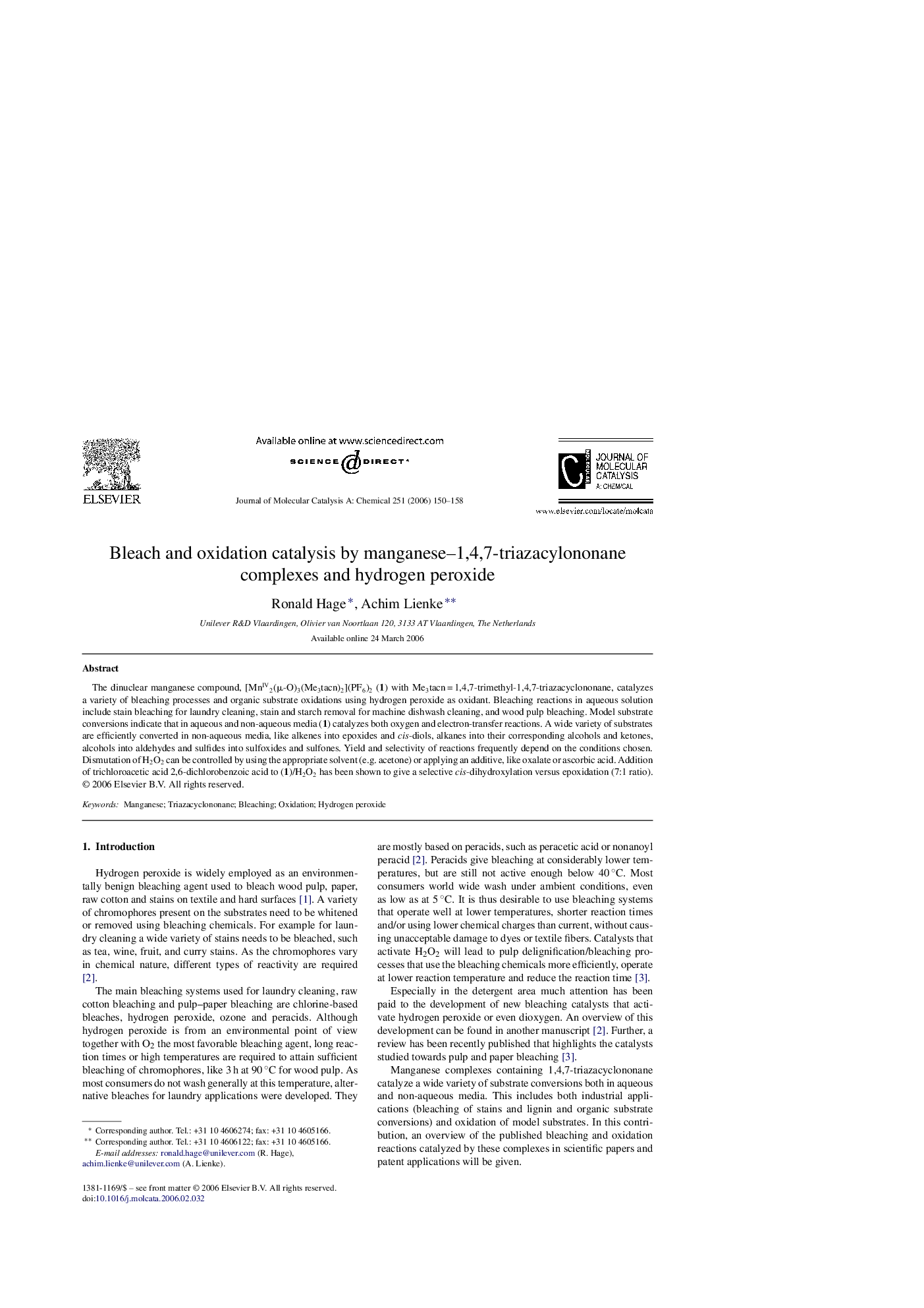| کد مقاله | کد نشریه | سال انتشار | مقاله انگلیسی | نسخه تمام متن |
|---|---|---|---|---|
| 68485 | 48515 | 2006 | 9 صفحه PDF | دانلود رایگان |

The dinuclear manganese compound, [MnIV2(μ-O)3(Me3tacn)2](PF6)2 (1) with Me3tacn = 1,4,7-trimethyl-1,4,7-triazacyclononane, catalyzes a variety of bleaching processes and organic substrate oxidations using hydrogen peroxide as oxidant. Bleaching reactions in aqueous solution include stain bleaching for laundry cleaning, stain and starch removal for machine dishwash cleaning, and wood pulp bleaching. Model substrate conversions indicate that in aqueous and non-aqueous media (1) catalyzes both oxygen and electron-transfer reactions. A wide variety of substrates are efficiently converted in non-aqueous media, like alkenes into epoxides and cis-diols, alkanes into their corresponding alcohols and ketones, alcohols into aldehydes and sulfides into sulfoxides and sulfones. Yield and selectivity of reactions frequently depend on the conditions chosen. Dismutation of H2O2 can be controlled by using the appropriate solvent (e.g. acetone) or applying an additive, like oxalate or ascorbic acid. Addition of trichloroacetic acid 2,6-dichlorobenzoic acid to (1)/H2O2 has been shown to give a selective cis-dihydroxylation versus epoxidation (7:1 ratio).
Manganese complexes with Me3tacn (1,4,7-trimethyl-1,4,7-triazacyclononane) as ligand catalyze bleaching reactions, which can be employed for both laundry and machine dishwash cleaning as well as bleaching of wood pulp. The complexes catalyze also organic substrate oxidations using hydrogen peroxide as oxidant and the different substrates are discussed in this review. The outcome of the oxidation processes highly depends on the conditions applied, partly due to suppression of undesired hydrogen peroxide decomposition. Figure optionsDownload as PowerPoint slide
Journal: Journal of Molecular Catalysis A: Chemical - Volume 251, Issues 1–2, 17 May 2006, Pages 150–158